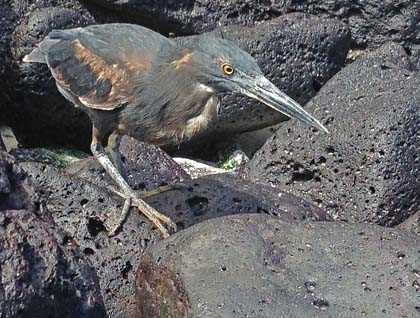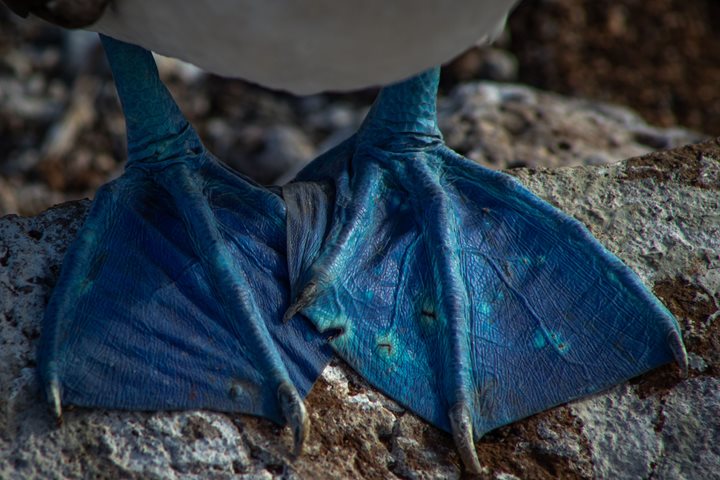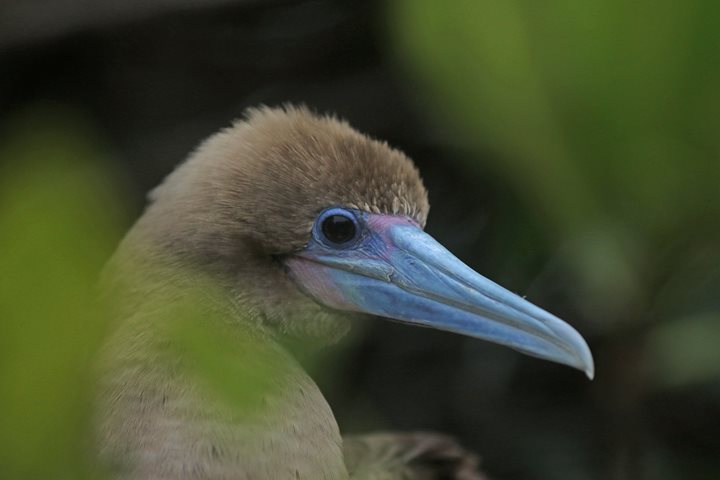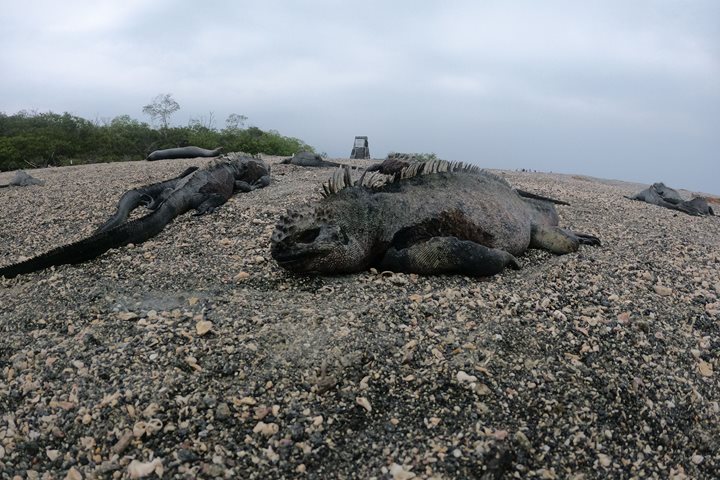We begin our journey early on Española Island with a pre-breakfast kayak along the coast. During this time of year the days usually start with some grey cloud cover and this morning is no exception, however the turquoise waters that surround us exude an awakening energy. Pacific green sea turtles drift by as they surface for a breath of fresh air and we hear an occasional bark from a distant sea lion. Along the coast we encounter a beach that is packed with Galapagos sea lions apparently resting after an extensive foraging run. The coast appears with modest vegetation due to the fact that we are at the peak of our “dry” season. Kayakers return to a hearty breakfast as the rest of the guests aboard the National Geographic Islander begin to stir. After breakfast, all obtain snorkeling gear and we proceed to explore the undersea world of our oldest island here in the Galapagos. Deep water snorkelers are treated to a kaleidoscope of colors on a wall of Gardner Island with schools of razor surgeon fish feeding on the shallow rocky reef. An occasional sea lion cruises by considering whether or not we are agile enough to play. Our eventual destination this morning brings us to Gardner Bay beach. Being one of our oldest islands in the archipelago, there has been sufficient time for buildup of a coralline sand beach and a shallow intertidal zone. The Española mockingbirds fly and run up to us as we land on this beach. Between their squawks and bleats they are looking for sustenance in the form of insects, which we happen not to have. The equatorial sun finally makes a strong appearance giving us a blue sky and crystalline azure waters.
After a short navigation we arrive to Suarez Point on the western area of this relatively small island. Here we find a density of life that occasionally blocks our national park trail. Marine iguanas are draped over the rocks as they try to warm up in the afternoon sun. The Española mockingbirds make another appearance and they follow some of our hiking groups. We find along the coastal cliffs Nazca boobies and the occasional blue footed booby. As all concentrate looking out over the ocean we find a great deal of air traffic with Galapagos shearwaters and red billed tropic birds avoiding collisions at their breakneck flight speeds. A number of Galapagos hawks are spotted with a few young ones eyeing us, possibly considering whether we are a food source or not. At the southern cliffs we feel the sea spray in our faces as waves are crash into a crack in the lava flow and explode into a cloud of water vapor. Larger more elegant birds are spotted cruising on the updrafts along the cliffs. As we head inland, the majestic waved albatross of Galapagos is found nearby with some large, ungainly chicks awkwardly walking and awaiting food from their parents. After a full day we all have a great deal to take in as we hike toward our floating home. The experience is not over, however, as the sun dips in the distance. A sea lion gives birth on the trail in front of a surprised group! It was an amazing finish to an amazing day.







